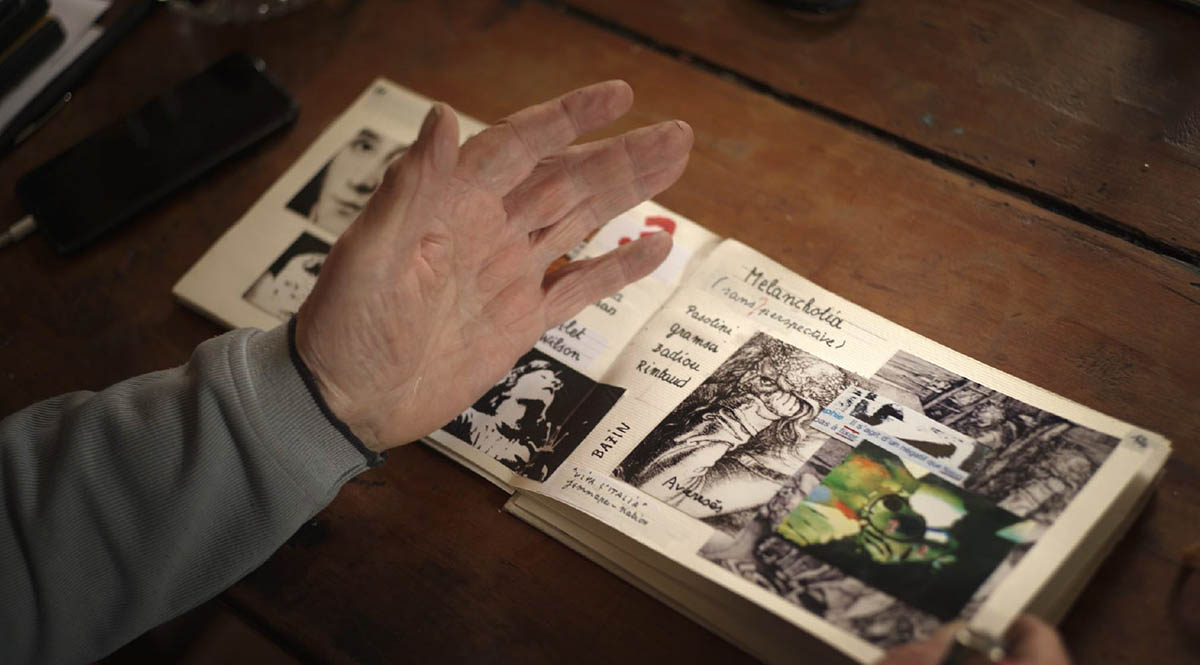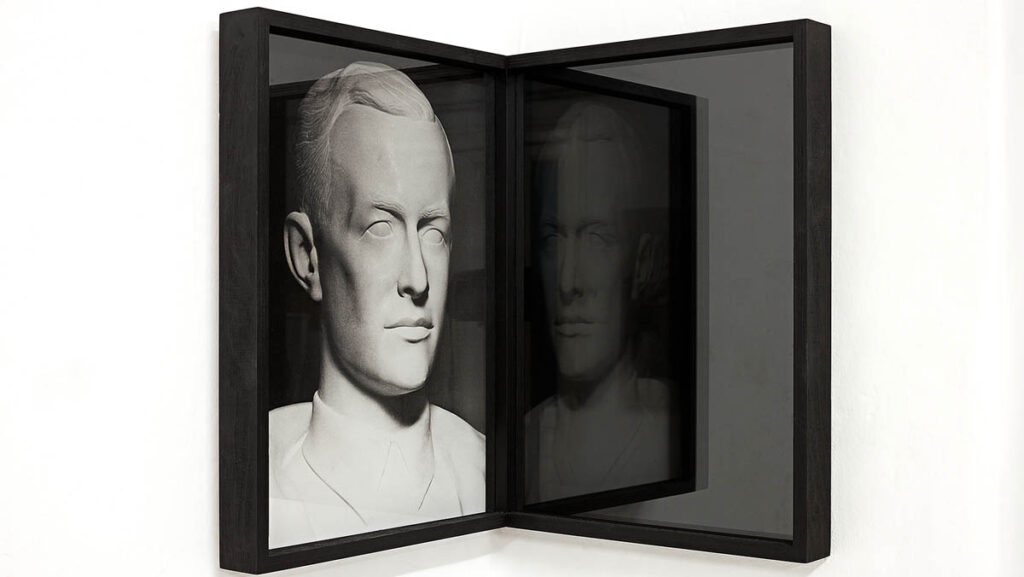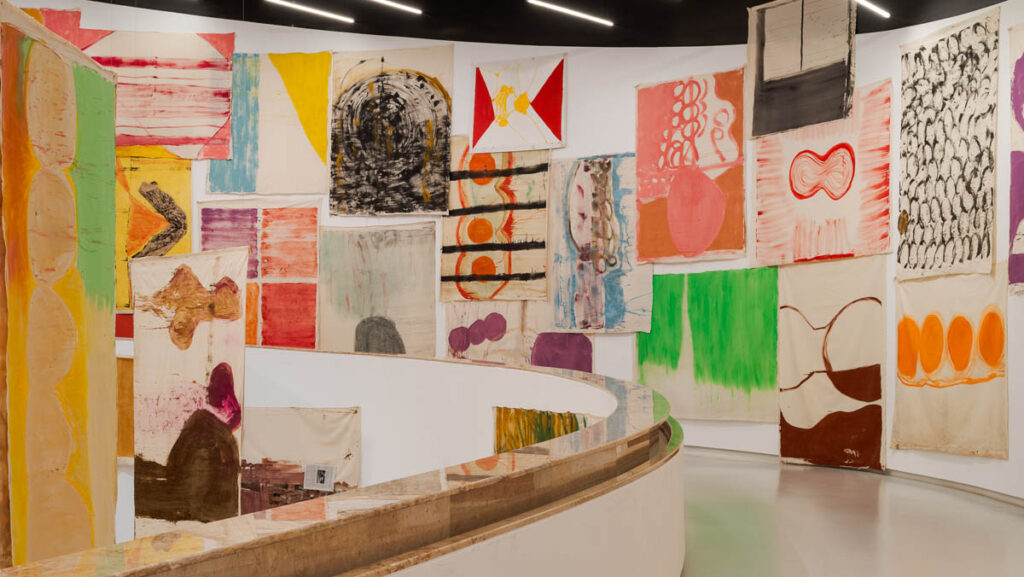
The recent years have witnessed a revival of interest in unfinished cinema, evidenced by the resurgence of latent film aesthetics through critical reexaminations found in Shadow Cinema (2021), Sights Unseen (2008), and Field’s Uplift Cinema (2015). These studies argue for a reformulation of film history through the sustained study of lost or nonexistent films—which represent more than 80 percent of the films made in the silent era—thereby challenging the notion of a complete cinematic canon. What sets 2025 apart in this ongoing revival of unfinished cinema is the diversity of its rediscoveries: in academia, Film Undone. Elements of a Latent Cinema by scholars Felicity Chaplin and Karen Pearlman examines the theoretical and historiographical stakes of incompletion in film studies; in poetic experimentation, Courtney Bush’s A Movie explores cinematic creation through poetry, using the language of film to evoke absence, ellipsis, and the mechanics of production; and in the realm of spectatorship, the grand-scale screening of Jean-Luc Godard’s Exposé du film annonce du film “Scénario” at Cinéma L’Archipel in Paris is the latest example of how an unfinished work can be celebrated as a major cinematic event. What sets this revival apart is not just the renewed attention to unfinished films, but the way completed works now actively engage with the aesthetics of incompletion—what we might call potential cinema. Alongside films that remain fragmentary or lost, there are fully realized films that stage their own inachèvement as a central formal and conceptual gesture: Bush succeeds in making the movie (Rejoice In the Lamb), and the notebook by Godard turned into a finish work, Scénario. This multiplicity of approaches underscores the complex status of unfinished films—not just as objects of scholarly investigation or aesthetic fascination but also as living cinematic events This revival exposes a critical tension: latency is not merely a “state of affair” for censored or forgotten projets but a now deliberate mode of cinematic creation that unsettles established paradigms of production, preservation, and remembrance. It can function both as a means of writing film history from below and as a fetishized fragment of auteurist nostalgia, its significance determined by who holds the power to define its rarity.
1.
Godard’s Exposé du film-annonce du film “Scénario” embodies this form of latency—one that risks becoming commodified, and ultimately stripped of its open potential. In his later works, Godard increasingly leaned into incompleteness, a formal strategy and a mode of reflexivity on cinema via video works. A strategy coined by Phillipe Dubois as: “Video thinks what cinema does”. His fragmented, unfinished projects are now absorbed into an economy of nostalgia, where the not-yet functions as a fetish object rather than an open space of possibility. At the core of the winter program at L’Archipel was Scénarios (2024), an 18-minute film considered the final audiovisual gestures of Godard, finished at the wake of the artist’s suicide. It is followed by Exposé du film-annonce du film „Scénario“ (2024), a 36-minute companion piece that extends and refracts its concerns. These works belong to a long tradition within Godard’s video art: that of the scénario, a form he explored not as private element of film production but as a space of thought, a cinematic object in its own right. Abandoning the written form, a script becomes a visual, in media res, processus of montage and creation. In Godard’s hands, the film-annonce is not an advertisement for an upcoming work ; it is a mise en abyme of the film to come, an autonomous essay reflecting on the conditions of cinema itself. This dynamic is further complicated by the broader critical discourse surrounding unfinished films. Despite their denaturalizing effects and inherent potential, most existing work on incomplete film projects assumes that film history is essentially complete and, as a result, often leaves its terms intact. The critical interest generated by these figures thus rests not only on the archive of concealed film production labor but also on the a priori value conferred by their established names.
The exhibition Le Moment Godard (Musée de l’Orangerie, 2024) had already made visible the tension between preservation and commodification. Presenting a vast archival display of Godard’s drafts, notes, and unfinished projects, the exhibition blurred the line between cinematic research and artistic relics, treating the traces of incompletion as objects of reverence. Similarly, the special boxed edition of Le Livre d’image—published in an ultra-limited run with hand-numbered prints—reproduces this logic of scarcity, where Godard’s late fragments are given an aura of exclusivity. Even the posthumous release of Scénario has been framed within this market logic: its incompleteness is no longer a site of open-ended possibility but an artifact, a last gesture of The Auteur to be circulated among collectors, festivals, and institutions eager to claim a piece of cinematic disappearance. It is particularly notable that the primary site chosen for the dissemination of this filmic essay was not a cinema, but a museum. There, Scénarios was not only screened five times a day but also accompanied by an exhibition of Godard’s preparatory notebooks, reinforcing the film’s status as both an aesthetic object and a conceptual proposition. This setting aligns with the increasing institutionalization of Godard’s late work, positioning it within the framework of contemporary art rather than exclusively within that of cinema. The museum space, with its emphasis on contemplation and historical contextualization, offers a different mode of reception—one that invites the viewer to engage with the film not merely as a moving image but as an archival and intellectual artifact. During his lifetime, Godard—like many filmmakers of his generation, from Marker to Akerman—turned to museums (Centre Pompidou) and installation forms not to sanctify his work but to challenge the ways cinema was exhibited and to expand its boundaries. His use of the museum was experimental: he saw it as a space where film could fragment, where images could be rearranged within an expanded notion of montage, and where the viewer was no longer confined to the linear temporality of a darkened theater but was free to move through compositions of images and sounds. The current diffusion strategy on the other hand, operates more from a gesture of patrimonialization or fixation. If the video thinks what the cinema does, the recent museumification is a mummification of both.
This is enacted within the film-announcement itself. Godard is seen leafing through his preparatory notebook, allowing the camera to capture each page. One of the characters interrogates the filmmaker, asking about what he is showing the camera, while the second films the notebook from above, staging the unveiling of the archives. This creates a layered performance: the act of revealing is itself scrutinized. At times, the characters ask Godard to repeat certain phrases or to further clarify specific segments. “You haven’t said anything about the epilogue,” one of them remarks. It is as though the very process of revealing Godard’s creative archive becomes a performance in itself, one that raises questions not only about what is shown but how it is shown—eliciting the viewer’s active engagement with the unfinished, the incomplete, and the ever-evolving nature of artistic production.
However, this process is executed with a colder, more detached tone compared to other film-announcements made with Anne-Marie Miéville. In Scénarios, the viewer is confronted with a different dynamic, one that distances itself from the usual connivance. A notable moment, lasting several minutes, showcases Godard’s attempt to add a black page to his notebook to signify a blackout shot between two sequences. His collaborators rush to find a sheet of the same size as the notebook, photocopying pages that need to be replaced. There’s a sense of urgency, not just to assist the filmmaker quickly, but more crucially, to ensure the preparatory archiving of every draft, every imperfection, every fragment of his work. It is a race to preserve the notebook’s coherence, not just as a tool of creation, but as a work of art in its own right. It’s one thing to follow the lead of genetic criticism and read the various “avant-textes” of a finished film—storyboards, outlines, treatments, and other draft materials devised for the shooting of the film—or to try to identify the “cinematic idea” that does (or does not) survive its multiple, material elaborations at all levels of film production. But it’s quite another to pursue such documents and ideas with a commercial product in sight, ornated by an authorial signature with which to validate them. In the film-announcement process, Godard is prompted to comment on each page of his notebook, as if granting a „final word“ to complete and clarify the work. This dynamic feels almost interrogative, as if Battagia was seeking closure for every fragment of the work, demanding Godard’s explanation to seal its meaning: “And what about Berenice ? You have not said a word about it yet.”. This impossibility to navigate the latency of cinema when repackage in such a thigh curatorial practice is at the heart of Philipp Widman interrogations in his paper Melting the Iceberg:
The horizon line for such navigation is demarcated by the question of how to preserve the potentiality contained in primary materials rather than overdetermined them to retroactively finish off the work or subsume them into conventionalised patterns. How do you not become a vampire who inserts themselves into someone’s story in order to suck out its vital juices ? Who reevaluates and revaluates the undone and to what end, deserves ongoing attention.
2.
Against the commodified economy of undone film aesthetics, one must think of more experimental and freeing curatorial practices. Film Undone. Elements for a Latent Cinema articulates latency as a tool of resistance, a way to challenge the dominant structures that determine what films are made, preserved, and remembered. By focusing on the unrealized, the incomplete, and the forgotten, the book frames film history not as a fixed narrative but as a shifting field of potentiality. Here, the latent is what official histories overlook: unrealized projects, discarded scenes, ephemeral ideas never given form. This mode of latency aligns with Michel Foucault’s notion of rareté—the idea that discourse is shaped not only by what is articulated but by what remains rare, suppressed, or inaccessible. Latent cinema, in this sense, is a counter-history, an intervention into the mechanisms that determine visibility. A particularly insightful chapter is dedicated to the conversation between Annabelle Aventurin, Brigitta Kuster, and Léa Morin, where the curatorial-cinematographic dimension of latency is addressed as both a research approach and a form of curatorial practice. Their work does not seek to reveal lost films but to actualize their latency, to crystallize their presence without forcing the material to speak. The absence of Insurrectionnelle (Farouk Beloufa, 1972), a film destroyed before it could be seen, is not compensated by restoration but rather by the restitution of its incompleteness—like a phantom pain, it persists in the surrounding films that are programmed in its place. This refusal to dramatize the “not-yet-done” resists the impulse to stage absence as spectacle.
While institutions undeniably shape and sometimes constrain the political potential of latent cinema, a more politically engaged approach can preserve its capacity for resistance. By acknowledging incompletion as a functional reality—an intrinsic part of both film production and historiography—the possibility is opened for a vibrant, multi-narrative discourse that challenges dominant cultural frameworks and redefines the legacy of cinematic practice. In this sense, the
Non-Aligned Film Series, inaugurated by the curators, plays a crucial role, proposing a new life for non-filmic documents otherwise left in drawers, cabinets, or archival shelves. It asks not only which films should be made visible but also under what conditions this visibility occurs. In contrast to the postmortem Godard craze, where the unfinished is spectacularized as part of a larger auteurist mythology, the Non-Aligned Archive functions as an archive not just of missing films but of missed opportunities—films that „went missing because they were made.“ Which film’s incompleteness is staged and dramatized ? Which film are we considered to mourn ?
As Léa Morin writes, „Curating non-existent or absent films allows us to think of a history of cinema that is not limited to films made, and even less to films shown. It is an attempt, a proposal to bring films, figures, aesthetics, and forms into the history of cinema which, despite their apparent absence, have indeed existed.“ This framing opens a history of cinema with holes, omissions, and erosions—a latent cinema that reminds us of what Lylian Etienne called, at the crossroads of methodology and epistemology, „an art history without works.“1 In this sense, a history of cinema is no longer limited to its visible canon but becomes an invitation to study the socio-history of cinema and its networks of solidarity. Amputated of part of its iconography, these histories of cinemas question the canon of its discipline. Another chapter of Film Undone questions this non-mainstream appreciation of latency: Oleksandr Teliuk argues: “There is a way of speaking about unfinished cinema in a mainstream way. Thinking about a film undone is not only about canonical films, it’s about different migrations of footage.” Mainstream distribution companies may find an interest in the staging of latency, still its material conditions of diffusion are aiming for completeness and the search for a final site of monstration (the museum, the cinema). What differentiates Écran Noir Productions and the Non-Aligned Film series is that the former orchestrates the entirety of the production chain – from the filming of the Godard notebook commentary to its filmic diffusion and the museal exhibition of the now sacralized notebooks – while the later considered homelessness as the final state of theses images, migrating via multiples solidarity networks.
3.

Beirut Outtakes is a 7 min collage of abandoned publicity, and the result of journey from the neglected film reels of Beirut to their recomposing by Peggy Ahwesh. The decaying 35mm scraps, collected by Jayce Salloum from an abandoned projection booth, were gifted by him to the filmmaker—fragments traveling from hands to hands. These outtakes, intentionally disordered and left unprocessed, create a cinema that resists traditional restoration, offering a raw testament to time, decay, and collective memory. The film’s process—from the extraction of images to their transformation—embodies a form of cinematic migration, both geographical and temporal. “So films from the 1960s collected dust until about 1982 or so, when Jayce found them, and then in 2007 I made Beirut Outtakes.” It is neither complete nor fixed, yet it persists in its incomplete state, occupying a space outside the conventional canon. Through the act of offering and reassembling these forgotten images, Beirut Outtakes becomes a collective exercise in remembrance, a cinema born not of a singular vision but of shared fragments, left to decay yet never lost. It is a gift to memory itself, and a refusal to let the materiality of film become fixed in a neatly packaged show. In Film-annonce, Jean-Luc Godard remarks that it is strange to mark the beginning of the history of cinema with the story of the first film screening. Let us take this statement literally and consider latency not merely as an spectacularized aesthetic of process, but as a politics of solidarity and an epistemological tool to examine the histories of unmourned, unshown images.
Film Undone: Elements of a Latent Cinema
Edited by Philip Widmann
Published by Archive Books
Contributors: Alejandro Alvarado, Carmen Amengual, Annabelle Aventurin, Alia Ayman, Concha Barquero, Petra Belc, Uliana Bychenkova, George Clark, Greg de Cuir Jr, Shai Heredia, Tobias Hering, Tom Holert, Katie Kirkland, Olexii Kuchanskyi, Brigitta Kuster, Dhianita Kusuma Pertiwi, Léa Morin, Tara Najd Ahmadi, Ojoboca, Uriel Orlow, Volker Pantenburg, Lisabona Rahman, Mathilde Rouxel, Bunga Siagian, Oleksandr Teliuk, Elena Vogman, Akbar Yumni
ISBN 978-3-949973-32-1
- Lylian Etienne, L’histoire de l’art sans les œuvres, 2023, https://q2p.hypotheses.org/625 ↩︎





